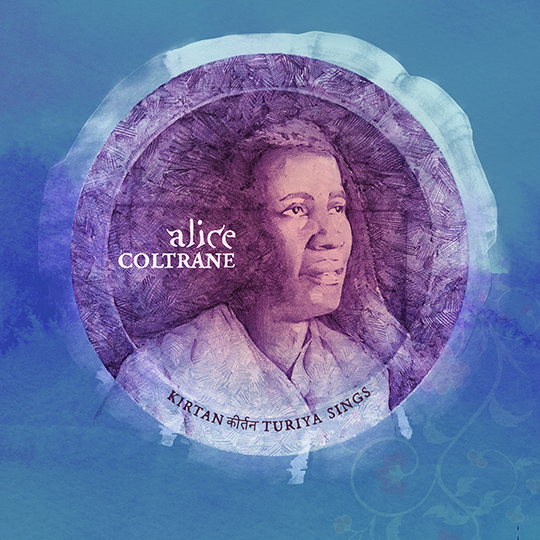MOST READ
- Ryuichi Sakamoto | Opus -
- interview with Lias Saoudi(Fat White Family) ロックンロールにもはや文化的な生命力はない。中流階級のガキが繰り広げる仮装大会だ。 | リアス・サウディ(ファット・ホワイト・ファミリー)、インタヴュー
- Li Yilei - NONAGE / 垂髫 | リー・イーレイ
- Columns 4月のジャズ Jazz in April 2024
- tofubeats ──ハウスに振り切ったEP「NOBODY」がリリース
- interview with Larry Heard 社会にはつねに問題がある、だから私は音楽に美を吹き込む | ラリー・ハード、来日直前インタヴュー
- interview with Martin Terefe (London Brew) 『ビッチェズ・ブリュー』50周年を祝福するセッション | シャバカ・ハッチングス、ヌバイア・ガルシアら12名による白熱の再解釈
- The Jesus And Mary Chain - Glasgow Eyes | ジーザス・アンド・メリー・チェイン
- Larry Heard ——シカゴ・ディープ・ハウスの伝説、ラリー・ハード13年ぶりに来日
- Columns ♯5:いまブルース・スプリングスティーンを聴く
- interview with Keiji Haino 灰野敬二 インタヴュー抜粋シリーズ 第2回
- interview with Shabaka シャバカ・ハッチングス、フルートと尺八に活路を開く
- Free Soul ──コンピ・シリーズ30周年を記念し30種類のTシャツが発売
- interview with Fat White Family 彼らはインディ・ロックの救世主か? | ファット・ホワイト・ファミリー、インタヴュー
- Fat White Family ——UKインディ・ロックの良き精神の継承者、ファット・ホワイト・ファミリーが新作をリリース
- 『成功したオタク』 -
- claire rousay ──近年のアンビエントにおける注目株のひとり、クレア・ラウジーの新作は〈スリル・ジョッキー〉から
- Columns 3月のジャズ Jazz in March 2024
- Beyoncé - Cowboy Carter | ビヨンセ
- Columns 坂本龍一追悼譜 海に立つ牙
Home > Columns > ジョンへの追悼から自らの出発へと連なる、1971年アリス・コルトレーンの奇跡のライヴ- Alice Coltrane
アリス・コルトレーン - カーネギーホール・コンサート
365日かけて元の位置に戻るこの地球という美しい岩の上では、作品を聴き、理解し、前日とは違った見方ができる日が365ある。私たちは、地球上の多くのひとがアリスやジョン・コルトレーンのステージを見たことがないであろう時代を迎えようとしている。コルトレーンは2人とも、やがてモーツァルトのように男女の神話のような空間に住むことになるだろう。幸いなことに、私たちには写真があるし、アーカイヴ映像も少しはある。今後新しい世代がこのコンサート、ファイアー・ミュージックとスピリチュアル・ジャズの両方を、そしてアリスとジョン・コルトレーンの一期一会のみごとな融合を解釈し、再評価することになるだろう。
本作『アリス・コルトレーン~カーネギー・ホール・コンサート』は、ノスタルジアの魅力が二重に構成されている。アルバム・タイトルには「アリス コルトレーン」の名前だけが反映されており、初心者にとっては、そこで聴ける音楽への期待を膨らませることになる。 ただし、実際の録音は追悼と祝福だ。アリスとジョン、2人のアーティストは2024年現在では故人だが、これが録音された1971年当時においては、ジョン・コルトレーンはその4年前に他界しており、依然としてジャズ界のヒーローだった。私たちはまずここで、アリスがジョンのライフワークのなかに創造性と愛を見出していることを知る。そしてまた、アリスが自分の種を植え、宇宙の木々に囲まれているのを聴くことができる。このコンサートは、ある伝説的な人物の出発が、別の人物の上昇の夜明けを始めるという、彼らの芸術的パートナーシップの図式なのだ。
本作では、スピリチュアルな瞑想やヴァイブに満ちたリラクゼーション集中法からフリー・ジャズ世代の衝撃的なカオスの叫びまで、レコーディングのバランスはシーソーのように変化している。この音の組み合わせが当時どう捉えられ、いまどう捉えられるかは興味深く逆説的だ。往年のジョンの『アセンション』(1965)の爆音をまだ渇望している聴衆にとっては、アルバムの後半はカタルシスだったろう。しかし、それはアリスが必ずしも望んでいた姿ではない。本作において彼女は、 『ジャーニー・イン・サッチダーナンダ(Journey in Satchidananda)』(1971)に収録された表題曲と “シヴァ・ロカ(Shiva-Loka)” で自分自身とその正体を示している。1968年から1973年にかけて、アリスは4人の子供を持つポスト・ジョンの世界での大きなプレッシャーにもかかわらず、信じられないほど多作で、作品のなかで東洋(インド)のスピリチュアリティを探求することに熱心だった。同世代の他のアーティストとは異なり、アリスはそれから何十年も経った2007年に他界するまで、彼女のスピリチュアルな旅から離れることはなかった。ゆえに1971年以降のアリス・コルトレーンの音楽が具現化していった芸術的ヴィジョンの息吹を考えると、このレコーディングには必ずしもアリスの世界すべてが録音されているわけではない。
しかし、本作を歴史のない音楽として、ジャズの長大な理念のなかに漂う音として受け止めるなら、味わうべきものは多い。アリスがハープという楽器を選んだことは、彼女がジョン以降をどのように歩みたいかを表現する上で重要な意味を持っている。ハープにはジャズの歴史がない。つまり、典型的なヴィルトゥオーゾ(名演奏家)的ジャズの装飾を忌避する、記憶のないサウンド・クリエーターとして機能できる。ジョンもそういうアーティストだった。ハープによってアリスはムード、質感、感情、純粋な表現、メロディ、瞑想、そしてもっとも輝かしいに悟りに集中する。歴史の重みを軽やかに避け、アーティストたちは新しいものの先駆者として自由に表現する。
アルバムの後半の、獰猛な “アフリカ(Africa)” と “レオ(Leo)” に近づく前に、アリスが選んだ “ジャーニー・イン・サッチダーナンダ” と “シヴァ・ロカ” は、夜の闇と昼の明るさの完璧なコントラストであり、東洋のスピリチュアリティと自由な表現のユニークな融合を示している。アメリカがまだベトナム戦争という失敗に膝まで浸かっていた頃、アリスのゆらぎのあるハープ・フライトのクレッシェンドは、その世代で誰もが苦しんでいた不安に対する治癒として機能したのだろう。
そして、ノスタルジアへの頌歌として、アリスは楽器をピアノに替え、ジョンがそばにいた時のポジションを再現した。“アフリカ” と “レオ” におけるエネルギーの放出は、グループがどれだけ爆発を起こせるかの耐久テストとなった。ジョンは不在だったが、代わりにファラオ・サンダース、アーチー・シェップ、セシル・マクビーなど、ジョンがもっとも信頼したコラボレーターたちが参加している。感動的な音のカデンツは、幸運にも彼らに導かれた聴衆に畏敬の念を抱かせた。音楽はインスピレーションを与え、自己発見へと駆り立てる力を秘めている。そのエネルギーは決して衰えることはない。最後の音が鳴りやむのを心いっぱいの拍手で祝福する聴衆に温められている。
Alice Coltrane - The Carnegie Hall Concert
written by Kinnara : Desi La
On this beautiful rock called Earth, that takes 365 days to return to its original position, there are 365 different days to listen and understand a work or see it differently than the day before. We are coming at a point in time where no one on Earth will have seen Alice or John Coltrane on stage. Both Coltranes will soon inhabit a space like Mozart as a myth as much as a man and woman. Luckily we have pictures. And a few bits of archival footage. Each following generation will from now on interpret and reevaluate this concert, both fire music and spiritual jazz, and the unique once in a lifetime union of Alice and John Coltrane.
The allure of nostalgia is two fold in this release, Alice Coltrane - The Carnegie Hall Concert. The title reflects only Alice Coltrane’s name and to the uninitiated, that would be their expectation of the music contained. The actual recording though is a reflection and/or a celebration. Both artists, Alice and John are now deceased as of 2024 but at the time of recording in ’71, John Coltrane was a not so distantly deceased hero of the jazz world having passed away almost 4 years previously. We see Alice view the love of her life’s work within herself and creative work. In the same concert we hear Alice plant her own seeds and surround herself with cosmic trees. This concert is a diagram of their artistic partnership with one legend’s departure initiating the dawn of another’s ascent.
The balance in this recording is a seesaw from spiritual meditation and vibe-filled relaxation concentration techniques to the shock chaos screaming of the free jazz generation. How this sound combination was viewed at the time and could be viewed now is intriguing and paradoxical. For the audience still craving the sonic blasts of yesteryear ASCENSION, the latter half of the recording was catharsis. But that isn’t who Alice necessarily wanted to be. She showed herself and what she is with “Journey in Satchidananda” and “Shiva-Loka.” Between 1968 and 1973, Alice, despite the immense pressures of a post-John world with 4 children, was incredibly prolific and intent on exploring eastern (Indian) spirituality within her work. Unlike other artists of that generation, Alice never left that spiritual journey until she passed away many years later in 2007. Given the breath of artistic vision that Alice Coltrane`s music would come to embody after 1971, the recording in a way robs us of completely experiencing Alice’s world.
If we take the album as just music without history, as just sounds floating in the lengthy ethos of jazz, there is much to savor. Alice’s choice of instrument in the harp is instrumental in expressing how she wished to navigate post-John. The harp has no real history with jazz. So it operates as a memoryless sound creator avoiding the trappings of typical virtuosic jazz. The type that John was clearly known for. The harp allowed Alice to focus on mood, on texture, on feelings, on pure expression, on melody, on meditation and most gloriously enlightenment. Without the weight of history, artists can embrace freedom maneuvering as vanguards of the new.
Alice’s choice of “Journey in Satchidananda” and “Shiva-Loka” before approaching the ferocious “Africa” and “Leo” were perfect contrasts of the darkness of night and brightness of day displaying her unique blend of Eastern spirituality and freeform expression. As the US
was still knee deep in the failure that was the Vietnam War, Alice’s fluctuation crescendos of harp flight acted as band aids to the anxiousness everyone suffered from in that generation.
Then in an ode to nostalgia, Alice switched to piano refilling the position she held with John by her side. Here the burst of energy with both tracks “Africa” and “Leo” became endurance tests for the number of explosions the group could launch. John was absent but supplanted by some of his most trusted collaborators like Pharoah Sanders, Archie Shepp, and Cecil McBee among others. Cadences of sonic emotion left a sense of awe for those in the audience lucky enough to be initiated by them. The music is inspiring and holds the power to nudge towards self-discovery. The energy never wanes, cherished by an audience that blesses with heart filled applause as the last sounds die off.
Profile
 緊那羅:Desi La/キナラ:デジ・ラ
緊那羅:Desi La/キナラ:デジ・ラニューヨーク出身、東京在住。電子音楽家 / 3Dアーティスト / グラフィックデザイナー。https://kinnara-desila--afrovisionary-creations.bandcamp.com/
COLUMNS
- Columns
4月のジャズ- Jazz in April 2024 - Columns
♯5:いまブルース・スプリングスティーンを聴く - Columns
3月のジャズ- Jazz in March 2024 - Columns
ジョンへの追悼から自らの出発へと連なる、1971年アリス・コルトレーンの奇跡のライヴ- Alice Coltrane - Columns
♯4:いまになって『情報の歴史21』を読みながら - Columns
攻めの姿勢を見せるスクエアプッシャー- ──4年ぶりの新作『Dostrotime』を聴いて - Columns
2月のジャズ- Jazz in February 2024 - Columns
♯3:ピッチフォーク買収騒ぎについて - Columns
早世のピアニスト、オースティン・ペラルタ生前最後のアルバムが蘇る- ──ここから〈ブレインフィーダー〉のジャズ路線ははじまった - Columns
♯2:誰がために音楽は鳴る - Columns
『男が男を解放するために』刊行記念対談 - Columns
1月のジャズ- Jazz in January 2024 - 音楽学のホットな異論
第2回目:テイラー・スウィフト考 - ――自分の頭で考えることをうながす優しいリマインダー - Columns
♯1:レイヴ・カルチャーの思い出 - Columns
12月のジャズ- Jazz in December 2023 - Columns
11月のジャズ- Jazz in November 2023 - 音楽学のホットな異論
第1回目:#Metoo以後のUSポップ・ミュージック - Columns
10月のジャズ- Jazz in October 2023 - Columns
ゲーム音楽研究の第一人者が語る〈Warp〉とワンオートリックス・ポイント・ネヴァー - Columns
〈AMBIENT KYOTO 2023〉現地レポート


 DOMMUNE
DOMMUNE


